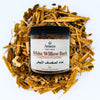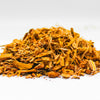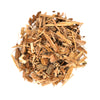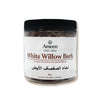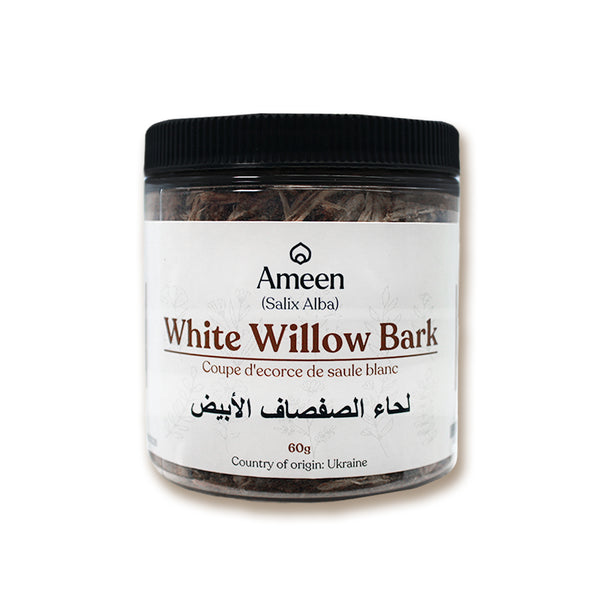White Willow Bark (Salix alba) is a distinguished botanical valued across cultures for its thin, chalky bark and distinctive silvery leaves. Sourced from the majestic white willow tree, this time-honored ingredient has been utilized for centuries in traditional practices, herbal formulations, and modern applications.
Culinary & Herbal Uses
Flavor & Aroma
- Mildly bitter and earthy with woodsy undertones.
- Frequently infused into herbal teas and tonics for its natural properties.
Common Preparations
- Herbal Teas & Infusions: Often steeped to create botanical blends.
- Powdered Form: Used in capsules and herbal formulations.
- Extracts & Tinctures: Incorporated into various botanical preparations.
Beyond Culinary Applications
White Willow Bark has also been widely used in botanical skincare and personal care products:
- A Natural Exfoliant: Found in skincare formulations for its gently refining properties.
- Included in botanical wellness products for topical use.
- A prized ingredient in herbal traditions across many cultures.
Why Choose White Willow Bark?
- Timeless Botanical: A widely recognized ingredient in herbal traditions and formulations.
- Multi-Purpose Uses: Suitable for teas, extracts, powders, and topical applications.
- Natural Origins: Derived from Salix alba, a tree with deep historical significance.
Botanical & Cultural Significance
Botanical Name: Salix alba
Common Names:
- English: White Willow Bark, European Willow Bark, Willow Bark
- French: Écorce de Saule Blanc
- Spanish: Corteza de Sauce Blanco
- Other: Salix Bark, Willow Tree Cortex, Willow Herb Bark, Salicin-Rich Bark

